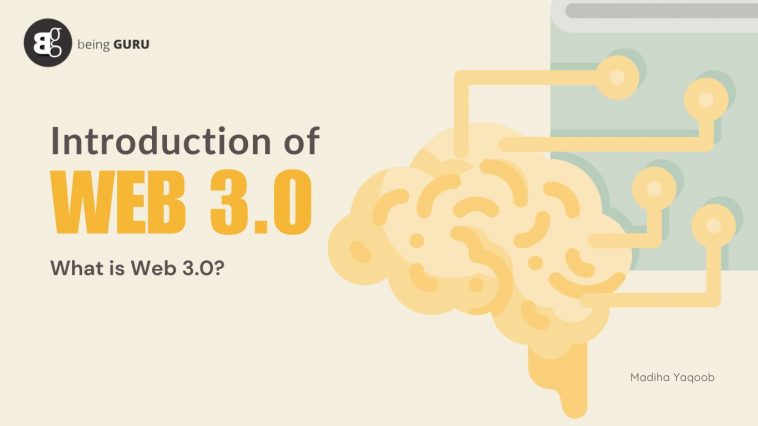Understanding Web 3.0 – Embracing the Next Internet Revolution
The internet has undergone remarkable transformations since its inception. From the static websites of Web 1.0 to the interactive and social platforms of Web 2.0, each phase brought significant changes. Currently, Web 3.0 promises to take us on a path of improved capabilities and user experiences as we stand on the verge of another digital revolution. Do you want to know, what is web 3.0? Read the article carefully.
What is Web 3.0 it’s Definition- The Semantic Web Redefined
The Semantic Web, commonly referred to as Web 3.0, or the Decentralized Web, is the newest iteration of the internet. online 3.0, in contrast to its forerunners, aspires to build a more intelligent and interconnected online where data and information can be easily linked and understood by machines.
Evolution from Web 1.0 to Web 3.0 – Embracing Decentralization and Smart Technologies
Web 2.0 introduced the era of dynamic and user-generated content through social media and online apps, whereas Web 1.0 was characterized by static web pages with little user participation. Now, with Web 3.0, we are entering an age where smart technologies and decentralized systems will redefine the online landscape.
Key Features of Web 3.0 – Building a Better Internet
Semantic Web and Data Integration
In Web 3.0, data will no longer exist in isolated silos but will be connected through semantic relationships. Better search results and individualized suggestions will emerge from computers being able to grasp and process information in a more meaningful manner as a consequence.
Distributed Computing and Blockchain Technology
The decentralisation of power is one of Web 3.0’s key elements. Building secure, trustworthy systems that offer users control over their data and do away with the need for middlemen will depend heavily on blockchain technology.
Artificial Intelligence Integration
AI will be at the heart of Web 3.0, driving automation and powering personalized experiences. Artificial intelligence will completely change how we interact with the web, from virtual assistants to material produced by the technology.
Enhanced User Experience
Web 3.0 will prioritize user experience, providing seamless and immersive interactions. Users will interact with digital information in new ways thanks to augmented and virtual reality.
Benefits of Web 3.0 – Unlocking the Internet for All
Improved Accessibility
Web 3.0 wants to open up the internet to everyone, notwithstanding any physical or mental disabilities. By leveraging AI and smart technologies, websites and applications will adapt to individual user needs, ensuring a user-friendly experience for everyone.
Personalized User Experience
With data integration and AI, Web 3.0 will understand users’ preferences, habits, and interests. This will enable platforms to offer highly personalized content, services, and recommendations, enhancing user satisfaction.
Enhanced Security and Privacy
Decentralization and blockchain technology will bolster security and privacy in Web 3.0. Users’ data will be under better user control, lowering the possibility of data breaches and unauthorized access.
Empowering Content Creators
Web 3.0 will empower content creators and artists by offering new monetization models through NFTs and decentralized marketplaces. This shift will provide creators with more control over their work and fair compensation for their efforts.
Web 3.0 Applications – Paving the Way to the Future
Decentralized Finance (DeFi)
DeFi platforms will transform traditional financial services by offering decentralized and trustless alternatives to banking, lending, and investing.
Non-Fungible Tokens (NFTs)
NFTs will revolutionize the art, gaming, and collectibles industries by providing unique ownership and provenance of digital assets.
Augmented and virtual reality (VR/AR)
VR and AR experiences will be prominent in Web 3.0, revolutionising learning, entertainment, and teamwork.
Termed the “Internet of Things”
Web 3.0 will enable seamless interaction between IoT devices, resulting in a more intelligent and connected world.
The Role of AI in Web 3.0 – Powering the Future
AI and Automation
AI-driven automation will streamline processes, from content creation to data analysis, boosting efficiency across various industries.
AI-Powered Personalization
AI will enable platforms to deliver personalized experiences, content, and product recommendations, enhancing user engagement and satisfaction.
AI-Driven Content Creation
Web 3.0 will witness the rise of AI-generated content, making it easier for businesses to meet the demand for high-quality and relevant information.
Challenges of Web 3.0 Adoption – Overcoming the Hurdles
Technical Complexity
Implementing Web 3.0 technologies can be complex and challenging, requiring expertise in blockchain, AI, and other emerging fields.
Regulatory Concerns
The decentralized nature of Web 3.0 raises regulatory questions, such as data privacy, security, and legal frameworks.
Integration with Existing Systems
Transitioning to Web 3.0 will require seamless integration with current systems, posing potential compatibility issues.
The Future of Web 3.0 – A World of Endless Possibilities
Expanding Use Cases
Web 3.0 will continue to redefine industries and expand its applications beyond our current imagination.
Shaping the Digital Landscape
Web 3.0 will shape the future of the internet, offering new possibilities and transformative opportunities.
Conclusion – Embrace the Web 3.0 Revolution
We now engage with the internet significantly differently as a result of Web 3.0. Web 3.0 will develop a smarter, more connected, and secure online environment by embracing data integration, artificial intelligence, and decentralisation. As Web 3.0 approaches this technological milestone, it is critical for companies, developers, and consumers to embrace its promise and actively contribute to defining its future. Web 3.0 has a promising future for the internet, thus the time has come to seize the chances it presents.





